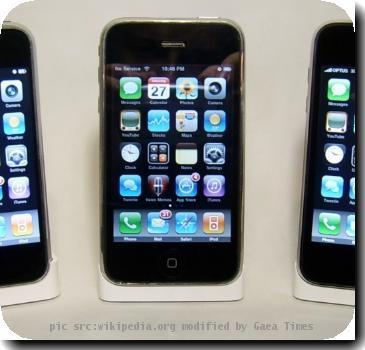Government plans to double amount of spectrum available for wireless communications
By APSunday, June 27, 2010
Gov’t plans to double available wireless spectrum
WASHINGTON — The Obama administration is backing a plan to nearly double the space available on the airwaves for wireless high-speed Internet traffic to keep up with ever-growing demand for video and other cutting-edge applications on laptops and mobile devices.
President Barack Obama on Monday committed the federal government to freeing up an additional 500 megahertz of radio spectrum for broadband over the next 10 years, with much of that auctioned off to commercial wireless carriers. The wireless industry currently holds roughly 500 megahertz of spectrum, but hasn’t put all of it to use yet.
The White House memorandum marks an official endorsement of one of the key proposals in the Federal Communications Commission’s national broadband plan for bringing high-speed Internet access to all Americans. That plan, released in March, envisions wireless technology as a key way to make that happen — particularly in rural areas where it may be uneconomical to build landline networks.
The FCC also wants to free up more airwaves to head off what it says could be a serious spectrum shortage — particularly in dense, urban areas — as more and more Americans use iPhones and other popular wireless devices to access everything from Facebook pages to driving directions while on the go.
On Monday, the administration framed the matter as one of jobs and economic opportunity.
“America’s future competitiveness and global technology leadership depend, in part, upon the availability of additional spectrum,” Obama wrote in the presidential memorandum. “The world is going wireless, and we must not fall behind.”
The president’s plan builds on existing efforts by the FCC, Congress and the Commerce Department’s National Telecommunications and Information Administration to identify radio spectrum that can be reallocated for commercial broadband services.
The memorandum calls for the creation of a public inventory of all airwaves now in the hands of government and commercial users to ensure that this spectrum is being used efficiently. The effort would potentially identify some that can be repurposed.
The FCC has already said it hopes to persuade TV stations to give up roughly 120 megahertz of spectrum in exchange for a cut of auction proceeds. This proposal, which would require federal legislation, has raised serious concerns among television broadcasters. But the administration said Monday that it supports this approach so long as it is truly voluntary for broadcasters.
The administration also said Monday that much of the spectrum will have to come from the federal government, including the Department of Homeland Security, the Defense Department and the Federal Aviation Administration. The president’s memorandum directs federal agencies that currently use the airwaves to cooperate with the NTIA as it looks for more capacity for commercial broadband. It seeks funding and other tools to ensure these agencies can still meet their own communications needs.
In addition, the administration directs the NTIA to consult with other federal agencies on technology that would enable users to share spectrum. And it calls for the government to set aside some spectrum for free, unlicensed uses such as Wi-Fi connections.
The administration is hoping to raise tens of billions of dollars by auctioning off more spectrum to commercial wireless carriers. Those proceeds would be used to reduce the deficit, invest in high-speed rail and other infrastructure projects, and build a wireless broadband network that would allow police officers, firefighters and other emergency workers to communicate with one another.
The administration stopped short of taking sides in an acrimonious tussle between the FCC and public safety officers over a 10-megahertz block of spectrum freed up in last year’s transition from analog to digital TV broadcasts. While the FCC wants to auction the spectrum off to the commercial sector, public safety officials insist they need it for their own broadband network.
The White House plan drew praise from FCC Chairman Julius Genachowski.
“Broadband is about investment, innovation, jobs and opportunity, and spectrum is vital infrastructure for broadband,” Genachowski said in a statement. “The administration’s strong action today is a critical step toward ensuring that America will lead the world in mobile broadband.”
That sentiment was echoed by at CTIA-The Wireless Association, the wireless industry’s leading trade group. CTIA President and CEO Steve Largent called the plan “a win for all Americans as it will drive innovation, investment and job creation.”
Tags: Computing And Information Technology, Government Regulations, Industry Regulation, Internet Technology, North America, United States, Washington, Wireless Technology




